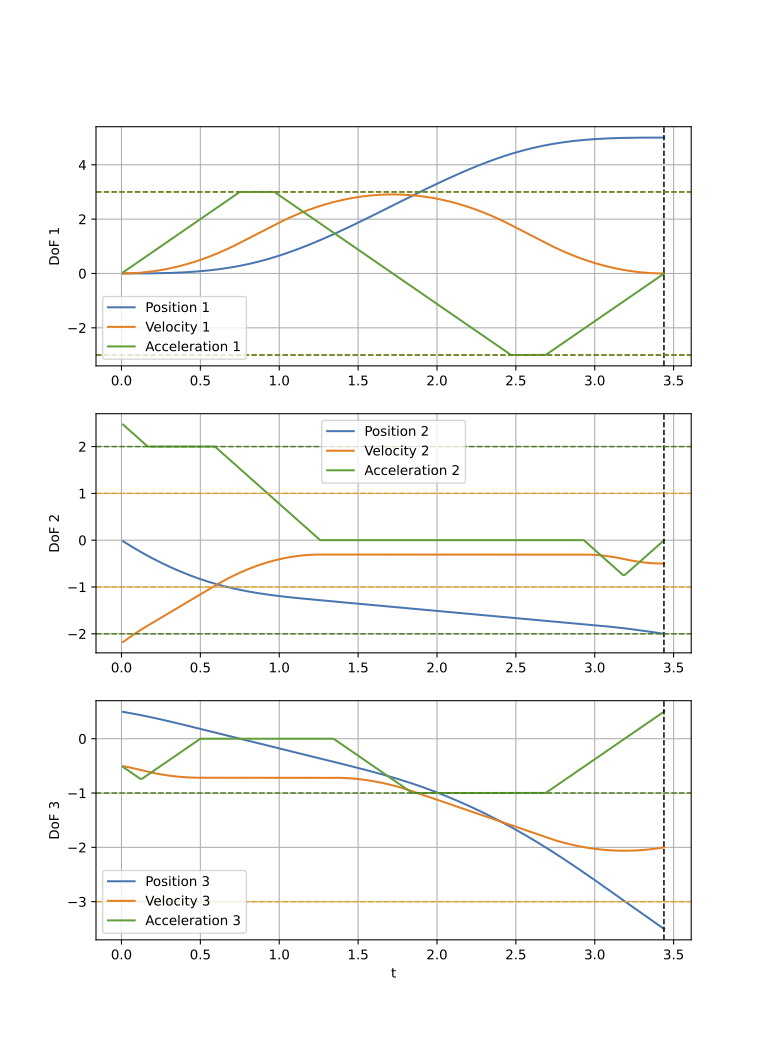Example 09: Dynamic Number of DoFs
C++
#include <ruckig/ruckig.hpp>
#include "plotter.hpp"
using namespace ruckig;
int main() {
// Create instances: the Ruckig trajectory generator as well as input and output parameters
size_t degrees_of_freedom = 3;
Ruckig<DynamicDOFs> ruckig(degrees_of_freedom, 0.01);
InputParameter<DynamicDOFs> input(degrees_of_freedom);
OutputParameter<DynamicDOFs> output(degrees_of_freedom);
// Set input parameters
input.current_position = {0.0, 0.0, 0.5};
input.current_velocity = {0.0, -2.2, -0.5};
input.current_acceleration = {0.0, 2.5, -0.5};
input.target_position = {5.0, -2.0, -3.5};
input.target_velocity = {0.0, -0.5, -2.0};
input.target_acceleration = {0.0, 0.0, 0.5};
input.max_velocity = {3.0, 1.0, 3.0};
input.max_acceleration = {3.0, 2.0, 1.0};
input.max_jerk = {4.0, 3.0, 2.0};
// Generate the trajectory within the control loop
std::cout << "t | position" << std::endl;
while (ruckig.update(input, output) == Result::Working) {
std::cout << output.time << " | " << pretty_print(output.new_position) << std::endl;
output.pass_to_input(input);
}
std::cout << "Trajectory duration: " << output.trajectory.get_duration() << " [s]" << std::endl;
}
Definition block.hpp:16
std::string pretty_print(const Vector &array)
Join a vector for pretty printing (e.g. to std::cout)
Definition plotter.hpp:11
Python
# ---
#
# Nothing to see here, as the Python version *always* uses a dynamic number of degrees of freedom.
#
# ---
Output Trajectory
